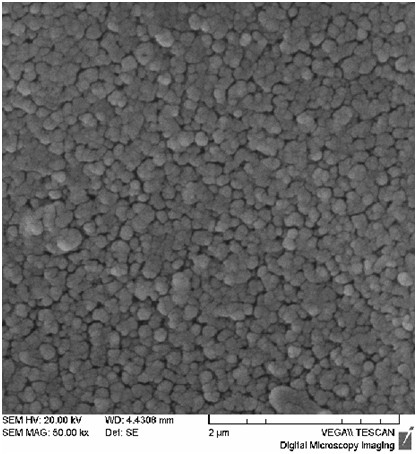Method for preparing calcium aluminosilicate nanometer microcrystal glass by utilizing natrium silica calcium glass waste slag
A glass-ceramic and nano-silicon technology, which is applied in the field of preparing calcium-aluminum-silicon nano-ceramic glass by using nano-silica-calcium glass waste residues, can solve the problems of poor compactness, shallow densification depth of the surface layer, and high requirements for refractory molds, and achieve mechanical properties. The effect of improving and improving the tendency of crystallization
- Summary
- Abstract
- Description
- Claims
- Application Information
AI Technical Summary
Problems solved by technology
Method used
Image
Examples
Embodiment 1
[0020] The specific implementation process is as follows:
[0021] (1) Collection of glass waste slag: sort the sodium silicate calcium glass waste slag, grind it for 4 hours, and then sieve it to obtain 80-200
[0022] purpose glass powder;
[0023] (2) Ingredients: ingredients by weight: soda-silicate-calcium glass powder 50%; silicon dioxide 22%; calcium carbonate 18%; alumina 4.5%; boric acid 1.5%; Conventional crystal nucleating agent: 2% titanium dioxide + 2% zirconium dioxide ;
[0024] (3) Melting: Put the above-mentioned prepared materials into a high-temperature furnace for melting, the melting temperature is 1450°C, and the holding time is 4 hours;
[0025] (4) Forming: Pour the molten glass into the mold to form;
[0026] (5) Crystallization and nucleation: put the shaped glass into a horse-brew furnace, nucleate at 720°C for 90 minutes, heat up to 1000°C for 120 minutes, and then cool to room temperature with the furnace;
PUM
| Property | Measurement | Unit |
|---|---|---|
| particle size | aaaaa | aaaaa |
| particle size | aaaaa | aaaaa |
| size | aaaaa | aaaaa |
Abstract
Description
Claims
Application Information
 Login to View More
Login to View More - R&D
- Intellectual Property
- Life Sciences
- Materials
- Tech Scout
- Unparalleled Data Quality
- Higher Quality Content
- 60% Fewer Hallucinations
Browse by: Latest US Patents, China's latest patents, Technical Efficacy Thesaurus, Application Domain, Technology Topic, Popular Technical Reports.
© 2025 PatSnap. All rights reserved.Legal|Privacy policy|Modern Slavery Act Transparency Statement|Sitemap|About US| Contact US: help@patsnap.com


